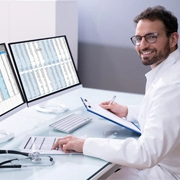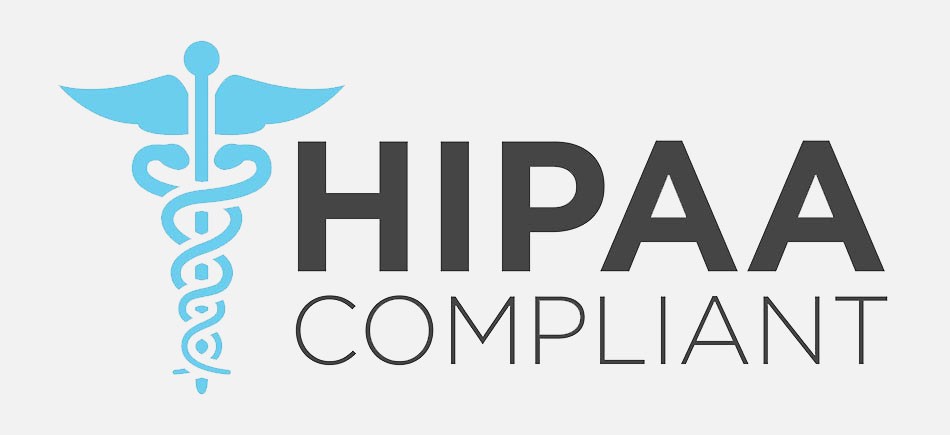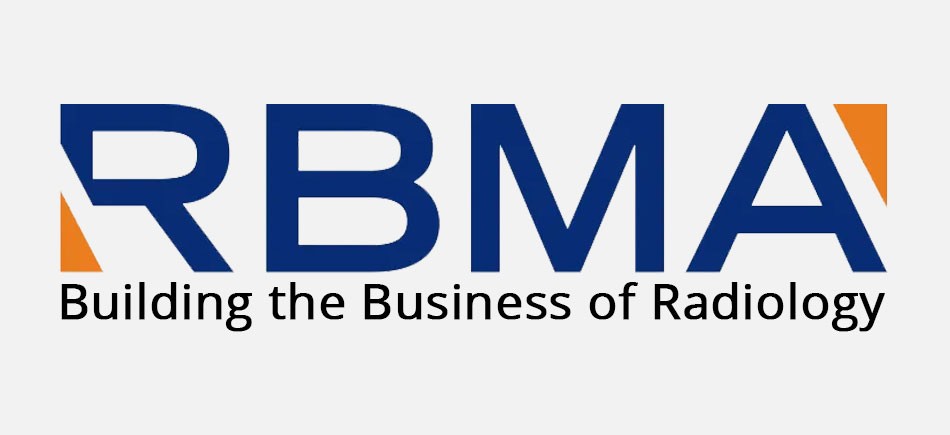Has it ever crossed your mind how a seemingly regular visit to the doctor’s office might undergo a transformative shift in the future? In the realm of this futuristic medicine, surgeons use a dynamic 3D model of a patient's unique anatomy for complex procedures. Physical therapists leverage virtual settings to accelerate patient recovery, and health professionals manage diseases like chronic pain with virtual reality. The components of these vivid scenarios are no longer just a figment of sci-fi imagination but have been actualized with the advent of Virtual Reality (VR) and Augmented Reality (AR) technologies in the healthcare industry.
Wandering through the corridors of an advanced hospital of the future, we can envision doctors wielding extraordinary tools - holographic body scans, digital surgical planning, and virtual reality immersive therapies. In this article, we traverse the world of AR and VR in healthcare, unveiling rich insights about their current role, potential future impact, and a plethora of benefits offered by these innovative technologies.
AR and VR's Influential Role in the Healthcare Arena
Virtual reality and augmented reality, often encompassed under the umbrella term 'Extended Reality' (XR), are cutting-edge digital technologies that blur the line between the physical and digital realms. They offer an in-depth experience that can transpose the user to a virtual environment, providing a real-world experience or augmenting the real-world surroundings with digital elements, respectively.
In the healthcare industry, these trailblazing technologies, especially the adoption of virtual reality in the healthcare industry, have charted an accelerating course — transforming clinical practices, enhancing patient care, offering advanced training for healthcare professionals, and boosting healthcare companies that employ these technologies.
The Transformative Potential of AR and VR in Healthcare
As we stand on the brink of a technological revolution in healthcare, the integration and widespread adoption of AR and VR technologies are spearheading a paradigm shift that can shape the future of medicine. Their transformative potential is envisioned to create a novel healthcare ecosystem that seamlessly integrates digital and physical realities to enhance overall healthcare delivery.
The future perspectives include using VR technology to transcend geographical limitations by facilitating remote surgeries. Surgeons located anywhere in the world could use VR technology to perform intricate procedures with the assistance of local medical staff, thus improving access to specialist healthcare regardless of location.
Moreover, AR, with its capability to overlay digital information onto the real world, lends itself as a potent tool for precise diagnostics. Medical practitioners could use AR-guided tools to delve into comprehensive patient data, analyze diverse symptoms, make accurate diagnoses, and formulate effective treatment strategies, thereby elevating the standard of patient care.
Likewise, the application of virtual reality in medicine demonstrates immense promise within the realm of medical education. By incorporating VR-integrated modules, an interactive and immersive learning experience can be crafted. This offers students a hands-on educational experience, encouraging them to experience various medical scenarios from different perspectives and thereby reinforcing the learning process.
In essence, with the increasing incorporation of AR and VR technologies in healthcare, we are stepping toward a future where these cutting-edge tools become the cornerstone of medical procedures, shaping safer, more efficient, and patient-focused healthcare practice. Additionally, contemplating the future of augmented reality unveils new horizons for enhancing patient engagement and participation, opening up innovative avenues for treatment and health management like never before seen.
Catalyzing Transformation - The Applicative Horizon of AR and VR in Healthcare
The profound impact of AR and VR in restructuring the healthcare industry is becoming increasingly evident. Seamlessly embedding digital information into our physical world or creating immersive virtual environments, these ground-breaking technologies are opening new avenues in diverse medical fields.
Take, for instance, the demanding domain of surgical procedures. Here, VR comes into play as an instrumental tool in pre-operative planning. By facilitating a virtual exploration of the patient's unique anatomy in a 3D model, surgeons can devise meticulous strategies for the surgery, significantly reducing potential risks and ensuring better outcomes.
The transformative role of AR is also most notable in the sphere of medical education. By overlaying digital 3D models onto actual surroundings, AR offers an interactive learning environment. This immersive approach deepens the students' understanding of intricate human anatomy, various pathological conditions, and complex medical procedures, shaping an enriching educational experience.
In the realm of physical therapy, VR's contributions have been remarkable. By replicating real-world situations in a virtual environment, VR motivates patients to participate actively in their recovery journey, aiding faster rehabilitation. The integration of virtual reality applications in healthcare extends these benefits, offering innovative ways to address a wide range of therapeutic needs.
Furthermore, VR serves as an integral partner in the rehabilitation of cognitive functions. Patients experience a controlled yet engrossing virtual environment, which stimulates their cognitive faculties, leading to a more efficient recovery process.
Within the high-pressure environment of the operating room, AR holds an undeniable significance. By providing a real-time overlay of essential patient information, it promises surgeons a level of precision and control hitherto unattainable.
In short, AR and VR technologies have begun to radically redefine the healthcare industry, bolstering the precision and efficiency of various medical procedures, and enhancing overall patient care. These evolving technologies spearhead an invigorating phase of transformation, promising the dawn of a revolutionary era in healthcare.
VR and AR in Healthcare: Unveiling New Frontiers
Beyond the realms of surgical precision, medical education, and patient rehabilitation, Virtual Reality (VR) and Augmented Reality (AR) technologies are charting new territories in the healthcare sector. These innovations extend their utility to mental health therapy, patient engagement strategies, and enhancing the accuracy of diagnoses. As we journey into these unexplored avenues, we uncover the extensive capabilities of VR and AR in shaping a more inclusive and advanced healthcare landscape.
-
Revolutionizing Medical Training with VR
VR-based medical training transforms the learning environment for healthcare professionals. By offering a simulated medical setting, this innovative approach not only sharpens their skills but also significantly enriches their understanding of medical conditions. Playing a pivotal role in minimizing the likelihood of errors, the implementation of VR for healthcare is a critical advancement towards enhancing patient care and safety.
-
Enhancing Surgical Precision with VR
VR technology is revolutionizing the way surgeons prepare for operations by offering a detailed 3D visualization of the patient's anatomy. This invaluable tool aids in comprehensive pre-operative planning, significantly enhancing the success rate of surgical interventions.
-
AR's Impact on Medical Education
AR technology introduces an immersive dimension to medical education with its ability to project interactive 3D models of human anatomy. This enhancement aids students in achieving a profound grasp of bodily systems and enriches the educational experience.
-
Transforming Physical Therapy through VR
VR in physical therapy creates a captivating and interactive recovery path for patients. It engenders an environment that stimulates active engagement, steering patients towards a speedier recovery.
-
Real-Time Surgical Aid with AR
AR technology plays a crucial role in modern surgery by projecting essential patient data directly into the surgeon's field of vision. These real-time updates enhance decision-making precision and minimize potential complications.
-
Reinventing Rehabilitation with VR
VR's immersive therapeutic settings are pivotal in aiding patients through their rehabilitation process. These environments are tailored to stimulate mental activity and foster the recovery of cognitive functions.
-
Managing Pain with VR Innovation
Through the soothing escape provided by VR environments, patients experience significant relief from pain. This approach diverts the focus away from discomfort, offering a novel and effective pain management strategy.
The Remarkable Benefits of XR Technology in the Healthcare Industry
The advent of Extended Reality (XR) technology marks a pivotal shift in healthcare, offering innovative solutions that enhance medical training, patient treatment, and the overall healthcare delivery system. Through simulations and interactive experiences, XR technology is setting new standards for efficiency and effectiveness in patient care.
-
Training Healthcare Professionals
XR technology revolutionizes the medical training landscape, offering immersive, realistic simulations that enhance the competency and readiness of healthcare professionals, significantly impacting the quality of patient care.
-
Surgical Assistance
XR stands at the forefront of surgical innovation, providing surgeons with real-time, 3D visuals, ensuring surgical precision, and elevating patient outcomes in complex procedures.
-
Advanced Vein Detection
The application of AR technology simplifies vein detection, enabling a higher success rate for intravenous procedures and reducing patient discomfort through more accurate and efficient insertions.
-
Patient Consultation Enhancement
Through XR technology, patient consultations are transformed into highly informative and engaging sessions, utilizing visual aids to demystify medical conditions and treatment plans, thereby fostering patient comprehension and involvement.
-
3D Body Scanning
Leveraging AR for 3D body scanning introduces a breakthrough in diagnostic and treatment planning, offering detailed anatomical visualizations for personalized and accurate medical interventions.
Conclusion
The awe-inspiring digital journey of AR and VR technology has just begun. The healthcare industry is expected to undergo significant change in the coming years, opening up opportunities for patient-centered care, interactive medical education, cutting-edge diagnosis, and improved therapies.
Just as stethoscopes and X-rays once transformed the medical arena, VR and AR are now leading the new avant-garde in healthcare — pushing the boundaries towards a healthier and well-equipped future. Let's embrace and witness the transformative power of VR and AR in trailblazing an impactful and potentially life-saving healthcare system.

Get a FREE QUOTE!
Decide in 24 hours whether outsourcing will work for you.
Have specific requirements? Email us at: info***@outsource2india.com
USA
116 Village Blvd, Suite 200,
Princeton, NJ 08540
Key Differentiators
Software At O2I Healthcare
Specialties HIPAA Compliance HIPAA 5010
Standards Compliance CPT Coding
Compliance Healthcare
Processes Medical
Billing Process Charge
Entry Process Medical
Coding Process Medical
Claims Process FAQs on Medical Accounts
Receivable Services FAQs on Outsourcing
Claims Adjudication Services Medical
Transcription Process HL7 ICD-10 Compliance
-
 Outsourcing Medical Billing Services - Evaluating its Impact on Your Practice
Outsourcing Medical Billing Services - Evaluating its Impact on Your Practice
-
 US-based Healthcare Research & Consulting Firm Approached O2I For Medical Transcription Services
US-based Healthcare Research & Consulting Firm Approached O2I For Medical Transcription Services
-
 Outsource2india Provided Patient Onboarding Services to a Leading Healthcare Company
Outsource2india Provided Patient Onboarding Services to a Leading Healthcare Company
-
 Outsource2india Assisted a Florida-based Medical Billing Company with ICD-10 Implementation
Outsource2india Assisted a Florida-based Medical Billing Company with ICD-10 Implementation
-
 Caribbean Radiologists Got STAT Reports Automation Services from Outsource2india
Caribbean Radiologists Got STAT Reports Automation Services from Outsource2india
-
 Outsource2india Helped a Medical Imaging Firm with Quick Teleradiology Services
Outsource2india Helped a Medical Imaging Firm with Quick Teleradiology Services
Frequently Asked Questions (FAQs)
Can you elaborate on Virtual Reality (VR) and Augmented Reality (AR) in the healthcare sector?
VR and AR technologies create simulated or enhanced real-world environments, respectively, which play a significant role in various aspects of healthcare, from patient education to surgical procedures.
Could you highlight some potential difficulties while integrating VR and AR in healthcare?
High technological costs, technical expertise prerequisites, data security issues, and patient experiences such as motion sickness are some potential stumbling blocks in this integration.
Did the COVID-19 outbreak influence the prevalence of VR and AR in healthcare?
The pandemic has prompted a surge in the use of such technologies, proving invaluable for remote healthcare delivery and medical training during social distancing mandates.
Is the utilization of VR and AR in healthcare safe?
Yes, VR and AR are generally safe to use in healthcare, but proper guidelines must be followed to ensure patient comfort and data security.
Do VR and AR have a role in addressing mental health issues?
Yes, VR and AR therapies provide immersive experiences that can assist individuals in managing a range of mental health conditions, including anxiety, depression, and PTSD.
Can VR and AR contribute to pain management?
Yes, these technologies offer immersive distraction techniques and biofeedback exercises, which can assist individuals in managing their pain perception.

















 \
\
